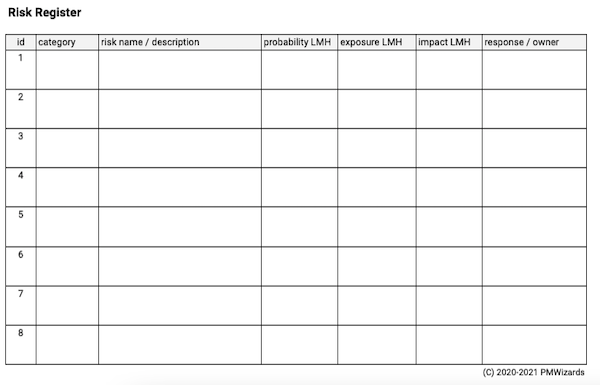Risk Register is a key project document to record risks and responses
Risks represent events that may impact negatively a project, while opportunities have a positive impact. Opportunities can be better explored in the context of Project Marketing.

The Risk Register is a table with the following data for each entry:
The risk category is classification of risks according to their origin, examples are:
Additionally we can designate a risk owner who is the person responsible for monitoring the risk.
TIP: even when the Project Manager delegates the responsibility to monitor she/he still retains accountability for managing that risk.
Risk probability is the probability of materialization: if every 100 times a procedure is executed the risk materializes, we can safely estimate probability at 1%. The challenge here is that we may not have historic data to make a good quantitative estimation. In this case, when we can’t estimate quantitative values for probability and exposure, we can start with a qualitative approach to classify them both as Low, Medium or High (the LMH scale).
The potential damage caused if the risks materializes is the risk exposure and is measured in monetary terms (U$). In case there are multiple estimations of this impact, provide an average amount that is the most likely cost the project will incur if the risk ever materializes.
Combining the risk probability with exposure we get an estimation of its impact that is used to rank risks so that the PM can concentrate attention on the High impact risks: risk impact ($) = risk probability * risk exposure ($)
This document is used in risk management.